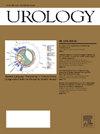Experiences and Outcomes of the Society of Genitourinary Reconstructive Surgeons Fellowship Training: Growth in Fellowships Mirrors the Evolution of the Discipline
IF 2.1
3区 医学
Q2 UROLOGY & NEPHROLOGY
引用次数: 0
Abstract
Objective
To describe experiences and outcomes of the Society of Genitourinary Reconstructive Surgeons (GURS) fellowship match. In 2012, GURS developed a centralized fellowship match which has grown from 13 to 30 programs.
Methods
GURS match statistics and case logs were reviewed from 2013-2024. Additionally, a 37-question survey evaluating satisfaction, procedural competency, fellowship experience, and employment opportunities were sent to graduates. Linear regression was performed to examine trends over time.
Results
Over the study period, program match success remained stable (94.7%; P = .50) while applicant success (63.3%) increased over time (P = .04). North American and female applicants experienced higher match success (72.8% and 73.6%) compared to their international (35.5%; P <.0001) and male counterparts (60.0%; P = .02). On case log analysis, mean surgical volumes per year increased in urethral reconstruction (mean=88.1; P = .02), male sexual health (n = 32.7; P = .03), genital reconstruction (mean = 16.4; P <.01) and abdominal reconstruction (mean = 24.5; P = .03). Male incontinence surgeries remained stable (mean = 30.5; P = .21) while female reconstruction declined (mean = 23.2; P = .01). With a survey response rate of 54.5% (97/178), training satisfaction was 95.9% which did not differ by gender (P = .54) or year of training (P = .22). Around 97.9% felt competent to enter unsupervised reconstructive practice, 94.8% reported an understanding of the relevant literature and 96.9% were satisfied with their job as a reconstructive urologist. Around 49.5% identified a different case mix in practice compared to fellowship, most commonly related to abdominal (44.9%) or genital reconstruction (16.3%).
Conclusion
GURS fellowships have grown organically over the last decade and mirror the growth and evolution of the discipline with sustained high levels of graduate satisfaction, surgical experience, competence, scholarly inquiry and employment.
泌尿生殖整形外科医师协会(GURS)研究员培训的经验和成果:研究金的增长反映了学科的发展。
目的:描述泌尿生殖整形外科医师协会(GURS)研究金匹配的经验和结果。2012 年,GURS 开展了集中式研究金匹配,目前已从 13 个项目发展到 30 个项目:方法:回顾了2013-2024年GURS的匹配统计数据和病例记录。此外,还向毕业生发送了一份37个问题的调查问卷,对满意度、程序能力、研究金经验和就业机会进行评估。研究结果表明,在研究期间,该项目匹配成功率达到了100%:在研究期间,项目匹配成功率保持稳定(94.7%;p=0.50),而申请人的成功率(63.3%)随着时间的推移有所上升(p=0.04)。北美申请者和女性申请者的匹配成功率(72.8% 和 73.6%)高于国际申请者(35.5%;p):在过去的十年中,GURS 研究金得到了有机的发展,并反映了该学科的发展和演变,毕业生的满意度、手术经验、能力、学术研究和就业率都持续保持在较高水平。
本文章由计算机程序翻译,如有差异,请以英文原文为准。
求助全文
约1分钟内获得全文
求助全文
来源期刊

Urology
医学-泌尿学与肾脏学
CiteScore
3.30
自引率
9.50%
发文量
716
审稿时长
59 days
期刊介绍:
Urology is a monthly, peer–reviewed journal primarily for urologists, residents, interns, nephrologists, and other specialists interested in urology
The mission of Urology®, the "Gold Journal," is to provide practical, timely, and relevant clinical and basic science information to physicians and researchers practicing the art of urology worldwide. Urology® publishes original articles relating to adult and pediatric clinical urology as well as to clinical and basic science research. Topics in Urology® include pediatrics, surgical oncology, radiology, pathology, erectile dysfunction, infertility, incontinence, transplantation, endourology, andrology, female urology, reconstructive surgery, and medical oncology, as well as relevant basic science issues. Special features include rapid communication of important timely issues, surgeon''s workshops, interesting case reports, surgical techniques, clinical and basic science review articles, guest editorials, letters to the editor, book reviews, and historical articles in urology.
 求助内容:
求助内容: 应助结果提醒方式:
应助结果提醒方式:


